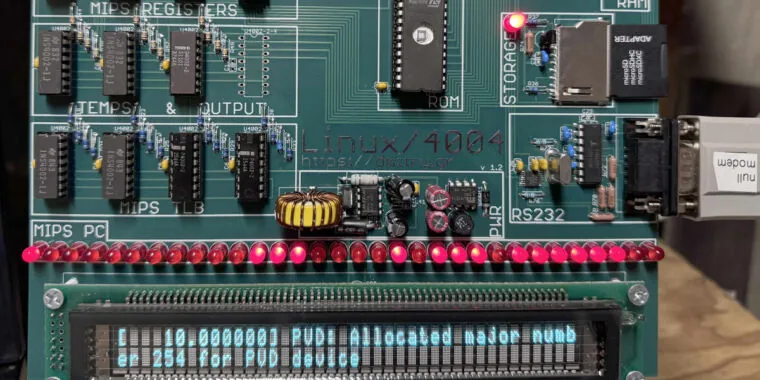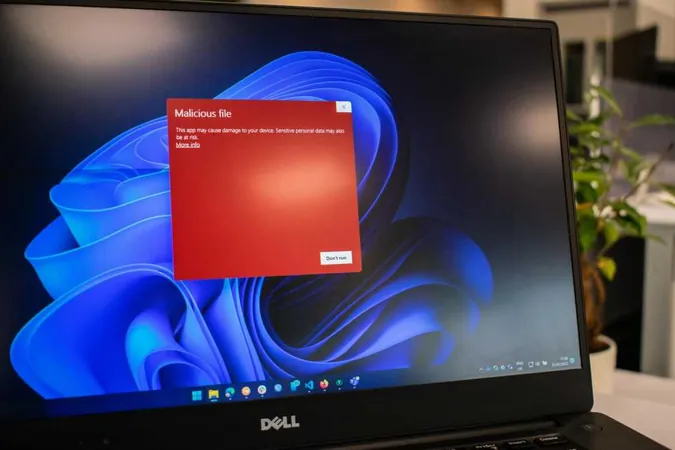
Incredible Feat: Linux Boots in 4.76 Days on Historic Intel 4004 Microprocessor!
2024-09-23
Introduction
In a remarkable demonstration of technological ingenuity, hardware hacker Dmitry Grinberg has achieved the seemingly impossible: he successfully booted Linux on the Intel 4004, the world's first commercially available microprocessor. Released in 1971, this 4-bit CPU, with a mere 2,300 transistors and an original clock speed of 740 kHz, is astonishingly outdated by today's standards, taking an astounding 4.76 days to complete the boot process.
Originally developed to power the Busicom 141-PF Japanese calculator, the Intel 4004 had limited applications in the commercial market of the 1970s and was eventually overshadowed by more advanced Intel processors like the 8008 and 8080, which were instrumental in the evolution of early personal computers, culminating in the iconic IBM PC era with the 8086 and 8088 chips.
Overcoming Limitations
For those doubting this extraordinary achievement, it's essential to note that the 4004 alone cannot run Linux due to its severely restricted capabilities. Grinberg ingeniously circumvented this limitation by creating an emulator that operates on the 4004 itself, mimicking a MIPS R3000 processor—the architecture that initially hosted Linux, particularly the DECstation 2100 workstation. This clever emulation, paired with simplified hardware, enabled a lightweight version of Debian Linux to boot up and reach a command prompt.
Grinberg is no stranger to such pioneering work; in 2012, he previously set a world record for running Linux on an 8-bit microcontroller (AVR), which sparked others to challenge that milestone. Determined to raise the bar again, he set his sights on the very first microprocessor, pushing the boundaries of what's deemed feasible.
The Slow Journey of Booting
Achieving this Linux boot on the Intel 4004 was no small feat; Grinberg faced numerous technical hurdles. The processor's limited ROM and RAM, absence of interrupts, and lack of basic logical operations like AND and OR made the task exceptionally challenging. To maximize the 4004's performance, Grinberg's emulator employs ingenious techniques, such as utilizing lookup tables.
The setup includes not just the 4004—overclocked at 790 kHz—but also a selection of vintage support chips from Intel's MCS-4 series. A VFD display communicates output, and input is managed via a serial connection, together consuming only about 6 watts of power.
Aesthetically, Grinberg designed a custom circuit board devoid of vias and featuring right-angle traces, reflecting a retro design. This unique device is intended to be wall-mounted as a conversation piece, executing commands at a snail’s pace over days or even weeks, an impressive testament to the persistence behind this project.
Conclusion
While the Linux/4004 project has no functional use, it underscores the adaptability of Linux and showcases the limits of emulation technology. Grinberg is contemplating the release of kits or fully assembled units for tech enthusiasts eager to experience Linux at its slowest speed, although nothing is set in stone just yet.
As these innovations remind us, the spirit of exploration in computing remains alive and well—just don’t expect a speedy result!



 Brasil (PT)
Brasil (PT)
 Canada (EN)
Canada (EN)
 Chile (ES)
Chile (ES)
 España (ES)
España (ES)
 France (FR)
France (FR)
 Hong Kong (EN)
Hong Kong (EN)
 Italia (IT)
Italia (IT)
 日本 (JA)
日本 (JA)
 Magyarország (HU)
Magyarország (HU)
 Norge (NO)
Norge (NO)
 Polska (PL)
Polska (PL)
 Schweiz (DE)
Schweiz (DE)
 Singapore (EN)
Singapore (EN)
 Sverige (SV)
Sverige (SV)
 Suomi (FI)
Suomi (FI)
 Türkiye (TR)
Türkiye (TR)